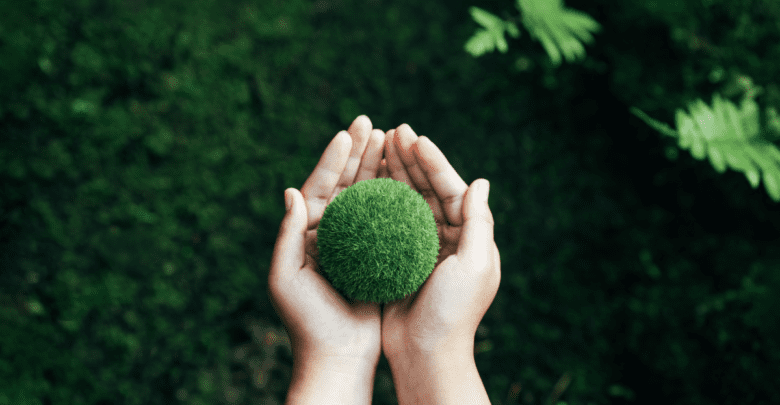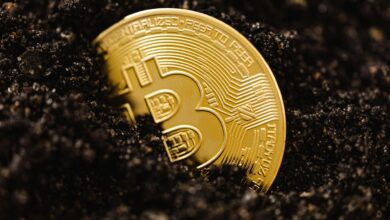Unlocking the Potential of Green Economy: Key Insights and Trends
The green economy is no longer just a buzzword. It represents a new economic paradigm that places sustainability and environmental responsibility at its core. The transition to a green economy is not only beneficial for the environment but also offers a myriad of economic and social benefits. In this blog post, we will delve into the concept of the green economy, explore its benefits, and highlight key trends shaping its future.

The concept of a green economy has been gaining traction worldwide as a response to the growing threats of climate change and environmental degradation. This economic model entails a shift from the traditional growth-at-all-costs model to one that balances economic growth with environmental sustainability and social equity. The green economy is all about creating jobs and wealth while reducing environmental risks and ecological scarcities.
Understanding the green economy is crucial in this day and age. It is not just about the environment; it is about reshaping our economies and societies towards a sustainable future. The green economy offers a pathway towards achieving the Sustainable Development Goals and a resilient, inclusive, and sustainable future.
Understanding the Concept of the Green Economy
A green economy is an economic system that aims to reduce environmental risks and ecological scarcities. It is not a separate economic system, but rather a way of reconfiguring the existing economy to make it more sustainable and inclusive. The green economy seeks to harmonize economic growth and environmental sustainability through the efficient use of resources, the reduction of waste, and the mitigation of environmental damage.
The green economy is underpinned by the principles of sustainable development and the recognition of the economic, social, and environmental dimensions of sustainability. It aims to decouple economic growth from environmental degradation, which means improving human wellbeing and social equity while reducing environmental risks and ecological scarcities.
In a green economy, economic growth and environmental sustainability are not mutually exclusive, but complementary. By promoting sustainable practices and technologies, the green economy aims to create new economic opportunities and jobs, improve human health and wellbeing, and enhance social equity and environmental resilience.
Benefits of Transitioning to a Green Economy
Transitioning to a green economy offers a multitude of benefits. First and foremost, it helps mitigate the adverse effects of climate change and other environmental challenges. By promoting the efficient use of resources and the reduction of waste, the green economy contributes to the conservation of natural resources and the preservation of biodiversity.
Secondly, the green economy has the potential to drive economic growth and create new jobs. By fostering innovation and promoting the adoption of green technologies and practices, the green economy can stimulate economic activity and provide new employment opportunities in sectors such as renewable energy, sustainable agriculture, and circular economy.
Moreover, the green economy can enhance social equity and improve human wellbeing. By prioritizing sustainable and inclusive growth, the green economy can help reduce social disparities, improve living conditions, and promote social inclusion.
Key Trends in the Green Economy

The green economy is being shaped by various trends, ranging from technological advancements to changing consumer behaviors and policy developments. One of the most significant trends is the growing demand for renewable energy. As the cost of renewable energy technologies continues to fall, they are becoming an increasingly viable alternative to fossil fuels.
Another key trend is the rise of sustainable agriculture. With the increasing recognition of the environmental and social impacts of conventional agriculture, there is a growing shift towards more sustainable farming practices.
The circular economy is also gaining momentum. This economic model, which emphasizes the reduction, reuse, and recycling of materials, is being embraced by businesses and governments alike as a way to achieve resource efficiency and waste reduction.
Finally, the role of government and policy in supporting the green economy is becoming increasingly important. Governments are playing a pivotal role in setting the policy and regulatory framework that facilitates the transition to a green economy.
The Role of Renewable Energy in the Green Economy
Renewable energy plays a vital role in the green economy. It represents a clean, sustainable, and increasingly cost-effective alternative to fossil fuels. By harnessing the power of the sun, wind, water, and earth, renewable energy technologies can generate electricity without emitting greenhouse gases or other pollutants.
The transition to renewable energy is not only beneficial for the environment but also offers economic and social benefits. It can stimulate economic growth, create jobs, reduce energy poverty, and enhance energy security.
Moreover, renewable energy can facilitate the decarbonization of other sectors of the economy, such as transport and industry. By providing clean electricity for electric vehicles and industrial processes, renewable energy can contribute to the reduction of greenhouse gas emissions across various sectors.
The Impact of Sustainable Agriculture on the Green Economy
Sustainable agriculture is another critical pillar of the green economy. It encompasses a wide range of farming practices that aim to produce food in a way that conserves natural resources, preserves biodiversity, and enhances soil health.
Sustainable agriculture can contribute to the green economy in several ways. First, it can reduce the environmental impact of food production by minimizing the use of synthetic fertilizers and pesticides, reducing water use, and preventing soil degradation.
Second, sustainable agriculture can enhance food security by improving the productivity and resilience of farming systems. By promoting crop diversity and improving soil health, sustainable agriculture can increase crop yields and make farming systems more resilient to climate change and other stresses.
Third, sustainable agriculture can contribute to rural development and poverty reduction by creating jobs and improving livelihoods in rural areas.
Promoting Circular Economy as Part of the Green Economy
The circular economy is an integral part of the green economy. It is an economic model that seeks to decouple economic growth from the consumption of finite resources. By promoting the reduction, reuse, and recycling of materials, the circular economy aims to minimize waste and make the most of resources.
The circular economy offers several benefits. First, it can reduce the environmental impact of production and consumption by minimizing waste and reducing the demand for new resources. Second, it can create economic opportunities and jobs in areas such as recycling, remanufacturing, and waste management. Third, it can enhance resource security by reducing dependence on imported resources.
Moreover, the circular economy can foster innovation and competitiveness. By encouraging the development of new business models and technologies, the circular economy can stimulate innovation and improve the competitiveness of businesses and economies.
The Role of Government and Policy in Supporting the Green Economy
Government and policy play a crucial role in supporting the transition to a green economy. Governments can set the policy and regulatory framework that facilitates the adoption of green technologies and practices. They can also provide financial and non-financial incentives to encourage businesses and individuals to embrace sustainability.
Policies can range from carbon pricing and renewable energy targets to waste reduction regulations and green procurement policies. These policies can help level the playing field for green technologies and practices, making them more competitive with conventional alternatives.
Moreover, governments can play a role in fostering public awareness and education about the benefits of the green economy. By promoting the understanding and acceptance of the green economy, governments can help drive the behavioral changes needed for the transition to a sustainable future.
Challenges and Opportunities in the Green Economy
Despite the many benefits of the green economy, there are also challenges that need to be addressed. These include the need for significant investments in green infrastructure and technologies, the displacement of workers in traditional industries, and the need for a just transition that ensures that no one is left behind in the shift to a green economy.
However, these challenges also present opportunities. The transition to a green economy can stimulate economic activity and create new jobs in green industries. It can also lead to improved health and wellbeing, reduced social inequality, and enhanced environmental resilience.
Moreover, the green economy can help countries meet their climate and sustainable development goals. By aligning economic growth with environmental sustainability and social equity, the green economy can provide a pathway to a sustainable, resilient, and inclusive future.
The Future of the Green Economy
The green economy is not a distant dream but a reality that is unfolding. As the world grapples with the twin challenges of climate change and sustainable development, the green economy offers a viable and promising solution.
While the transition to a green economy entails challenges, it also presents significant opportunities. With the right policies, investments, and behavioral changes, we can unlock the full potential of the green economy and pave the way to a sustainable future.
The future of the green economy is in our hands. Let’s embrace it and shape it for the better.




